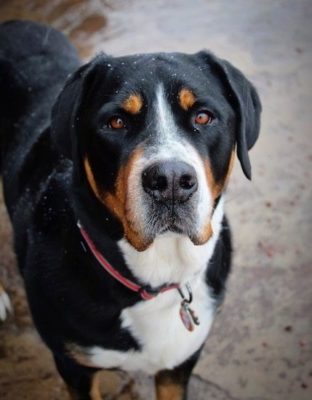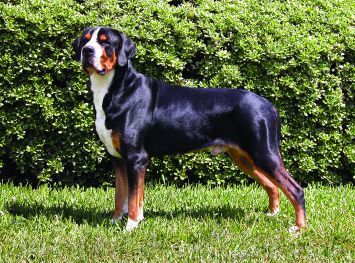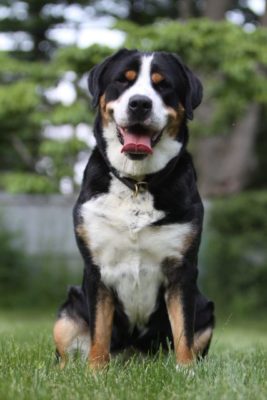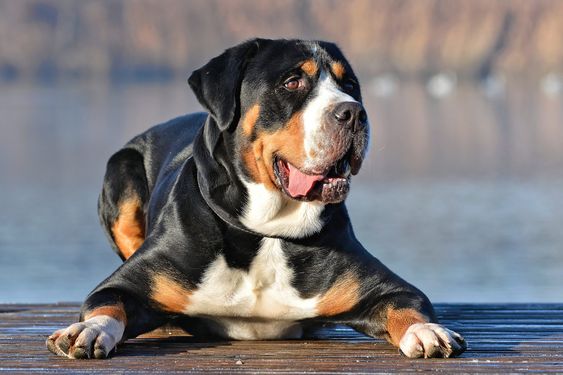Greater Swiss Mountain Dog
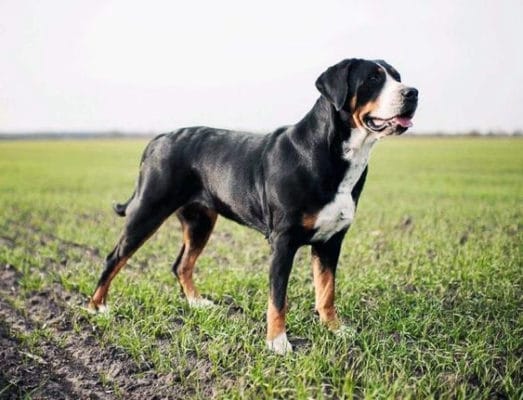
Greater Swiss Mountain Dog is a real friend for the family, devoted to his master. The dog is very fond of children, can be a good babysitter for them, play with them and protect them. This dog is used to always being near humans. He will keep you company on walks, fishing trips, and jogging trips. He can easily spend all the time in nature and can just as quickly lie on the couch.
Table of Contents
Breed Information
| Another Name | Grosser Schweizer Sennenhund, Grand Bouvier Suisse |
| Origin | Switzerland |
| Height | Males 65-72 cm Females 60-69 cm |
| Weight | Males 50-64 kg Females 48-54 kg |
| Fur | Short |
| Color | Tri-color |
| Lifespan | 10-12 years |
| FCI Classification | Pinscher and Schnauzer – Molossoid and Swiss Mountain and Cattledogs |
| Group | Watchdogs, protection dogs (guard dogs) |
| Price | $350-900 |
Breed Photos
Origin History
There is a theory that the Greater Swiss Mountain Dog appeared in the Alps more than 2000 years ago. For a long time, the dog was used in the pastures to protect and guard livestock against wild animals. Merchants also used the dog for their purposes – to transport goods. The dog was versatile in those days and could guard homes, accompany humans on the hunt, and be a companion and guide for the blind.
Professor Albert Heim first saw at a show in 1908 that this breed was similar to other Sennenhunds, but there were differences. So he decided to get involved in breeding a purebred.
Sometime later, after successful experiments, the first club of the Greater Swiss Mountain Dog was founded, and soon the dog was officially recognized. During World War II, the dogs were actively used as assistants for Alpine shooters; the Grosses carried ammunition and other military items.
Appearance
Dog of large size with well-developed muscularity and strong muscles. The physique is strong. Due to this, the dog can carry weights.
The male dog’s height can be from 65 to 72 cm, the height of the bitches – 60-69 cm. The weight of the dogs ranges from 48 to 64 kg. The coat is short, of three colors. The primary color is black, with white markings on the chest and muzzle. On the paws, cheekbones and chest can be reddish symmetrical markings.
The eyes are medium-sized, all brown shades. The muzzle is large, powerful. The coat is shiny in the light; its length is usually 3-4 cm.
Character
Greater Swiss Mountain Dog is a real friend for the family, devoted to his master. The dog is very fond of children, can be a good babysitter for them, play with them and protect them.
This dog is used to always being near humans. He will keep you company on walks, fishing trips, and jogging trips. He can easily spend all the time in nature and can just as quickly lie on the couch. The main thing is to have an owner nearby. That’s why it’s not recommended to get a dog if you spend a lot of time at work.
The Greater Swiss Mountain Dog gets along well with the whole family; he can obey not only his master. He has difficulty making new contacts and is aggressive to outsiders.
He has a positive attitude to other animals. Can quickly get along even with a cat. But if there is another dog on the territory, competition may appear. Especially friendly with school-age children: can walk them to school and wait for them from lessons. Dogs grow up slowly, and even as adults can play and fool around a lot.
Care
The best place for a dog would be in a yard near the house, where you can set up a spacious aviary. It should not be kept on a leash or chain.
The dog needs a lot of active play while growing up, but it’s essential to make sure that the Greater Swiss Mountain Dog doesn’t hurt itself. Up to a year old, they grow and strengthen their skeleton, joints, and bones.
Every day you should take your dog for a walk outside and give him a lot of attention. Every day you should brush the dog’s coat. With a special brush after a walk, it is necessary to clean the coat of dirt. Bathing is not recommended. Dogs of this breed are prone to eye diseases, so the eyes should be regularly inspected and wiped with a decoction of chamomile.
Training
The Greater Swiss Mountain Dog is a bit stubborn, so it is not easy to train him. It is essential to show the puppy who is the boss in the house from an early age, as they tend to lead.
It is necessary to start training him from childhood. It is essential to teach him simple commands, play with a ball, a stick in the park.
After a good training session, you should praise and pet your pet. Under no circumstances should you shout or raise your voice. This can cause anger and aggression.
Common Diseases
The Greater Swiss Mountain Dog generally has a robust immune system, but like all large dogs, are prone to hip dysplasia. During the puppy’s growth period, it is important to monitor the amount of exercise and prohibit a lot of running and jumping. From genetic diseases, they are prone to epilepsy. It is vital to wash the pet’s eyes regularly because they often have eye disease.
Nutrition
An adult dog should be fed twice a day. After eating, it is essential to give the dog an hour to rest. It is recommended to feed the natural dog food, as the Greater Swiss Mountain Dog is a predator by nature.
Part of the diet should consist of meat, vegetables, fruits. Greens can be added to cooked cereals. They contain many healthy vitamins.
 Aboriginal Afghan Hound
Aboriginal Afghan Hound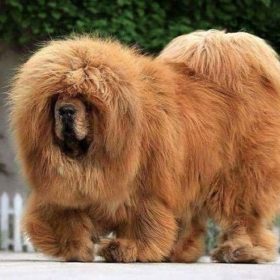 Tibetan Mastiff
Tibetan Mastiff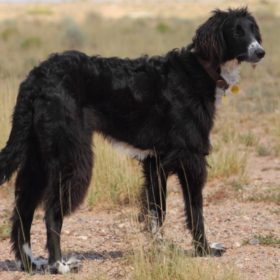 Taigan
Taigan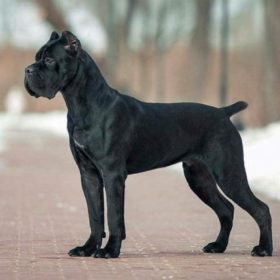 Cane Corso
Cane Corso Irish Wolfhound
Irish Wolfhound Posavac Hound
Posavac Hound